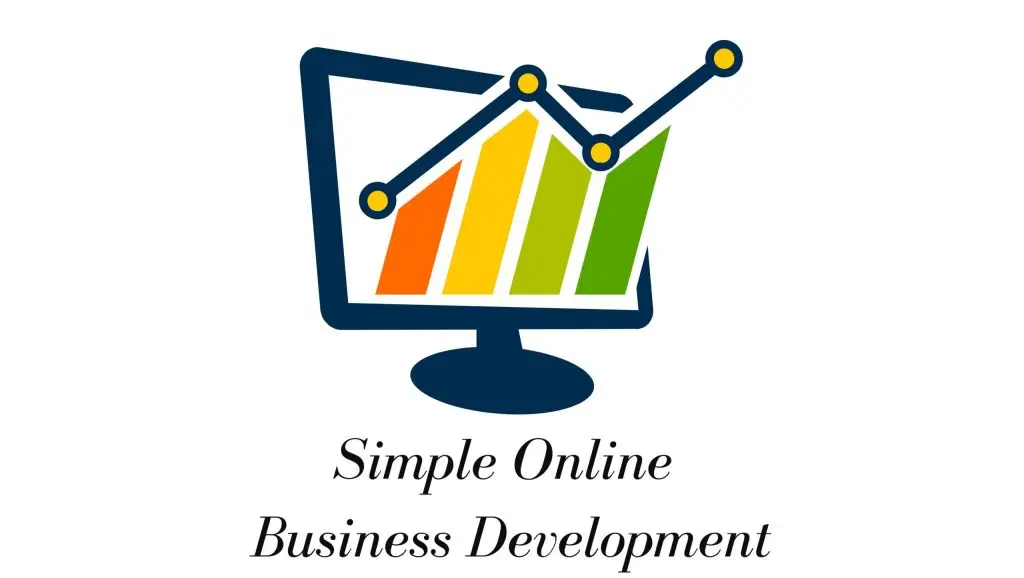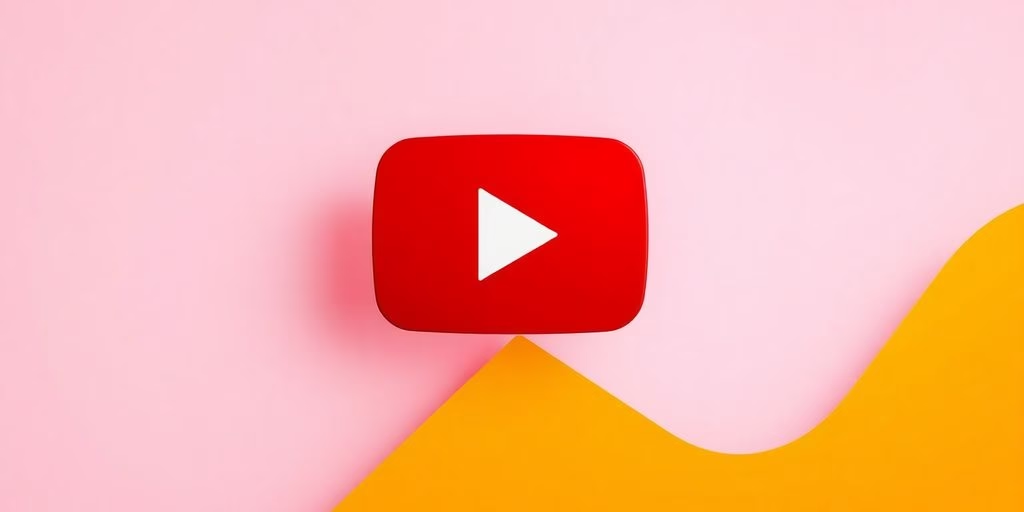Thinking about email marketing but not sure where to start? Mailchimp is a popular tool that can help small businesses get their message out. This beginners guide to Mailchimp breaks down the process, from setting up your account to sending out your first email campaign. We’ll cover the basics so you can start connecting with your audience today.
Key Takeaways
- Mailchimp offers a user-friendly platform for creating and sending email campaigns.
- Building your audience involves creating email lists and designing effective signup forms.
- You can create custom email templates or use Mailchimp’s pre-designed options.
- Analyzing campaign reports helps you understand what’s working and improve future emails.
- Integrating Mailchimp with other tools, like WordPress and social media, can boost your reach.
Getting Started With Mailchimp
So, you’ve decided to jump into email marketing with Mailchimp? That’s fantastic! It’s a really popular tool, and for good reason. It makes sending emails to your customers pretty straightforward, even if you’re just starting out. Think of it as your new best friend for keeping in touch with people who like what you do.
Welcome to Your Mailchimp Dashboard
Once you sign up and log in, you’ll land on your Mailchimp dashboard. This is your main hub. Take a moment to look around. You’ll see a few main tabs across the top: Campaigns, Templates, Audience (which used to be called Lists), and Reports. Each one does something a bit different, but they all work together to help you send emails. It’s like the control center for all your email marketing efforts.
Understanding Key Mailchimp Sections
Let’s break down those main sections a little more:
- Campaigns: This is where you’ll create and send out your actual emails, newsletters, or even landing pages. It’s the ‘doing’ part of email marketing.
- Templates: Before you send an email, you need to design it, right? This is where you’ll build or choose the look and feel of your messages. Mailchimp has some pre-made ones you can use, or you can build your own from scratch.
- Audience: This is where all your contacts live. You’ll organize them into lists here. It’s super important to keep this tidy so you know who you’re talking to.
- Reports: After you send something out, this is where you’ll see how it did. Who opened it? Who clicked what? This info helps you figure out what’s working.
Mailchimp is designed to be user-friendly, but like anything new, it takes a little time to get comfortable. Don’t feel like you need to know everything on day one. Just focus on getting familiar with these main areas first.
Setting Up Your Mailchimp Account
Getting your account set up is pretty simple. You’ll need to provide some basic information about yourself and your business. This helps Mailchimp know who you are and what you’re sending. You’ll also want to make sure your sending domain is verified. This is a step that helps make sure your emails look professional and don’t end up in spam folders. It’s a good idea to get this sorted early on, as it helps with your overall online presence, similar to how understanding SEO basics can help your website get found. Once that’s done, you’re pretty much ready to start building your audience and creating your first campaigns!
Building Your Audience
Alright, let’s talk about getting people to actually want to hear from you. Building your audience in Mailchimp is all about making it easy for interested folks to sign up and then giving them a reason to stick around. It’s not just about collecting emails; it’s about gathering a community that’s genuinely interested in what you have to say or offer.
Creating Your First Email List
Think of your email list as your VIP club. Mailchimp makes it super simple to set one up. You’ll want to create a list that’s specific to your business or brand. For instance, if you sell handmade soaps and also offer online courses about soap making, you might want two separate lists. This way, you can send targeted messages to each group without annoying people who aren’t interested in one of your offerings. When you create a list, you’ll be asked for some basic info like your company name and address – this is important for compliance, so fill it out accurately.
Designing Effective Signup Forms
Your signup form is the gateway to your list. Mailchimp offers a bunch of ways to create these. You can go with a simple, classic form or get a bit fancier. The key is to make it clear what people are signing up for and what kind of emails they can expect. Maybe you offer a discount for signing up, or a free guide. Whatever it is, make it obvious! You can also customize the fields you ask for. While you might be tempted to ask for a lot of info, remember that shorter forms often get more signups. Consider asking for just an email address and maybe a first name to start.
Here are a few ideas for signup forms:
- Embedded Forms: These are great for putting directly on your website, usually in the sidebar or footer.
- Pop-Up Forms: These appear after a visitor has been on your site for a bit, or when they’re about to leave. They can be effective but use them sparingly so they don’t annoy people.
- Landing Pages: Mailchimp can host simple landing pages for you, which are perfect for specific promotions or lead magnets.
Remember, the goal is to make signing up a no-brainer for someone who’s already interested in your brand. Keep it simple, clear, and enticing.
Understanding Signup Sources
Knowing where your subscribers are coming from is super helpful. Did they sign up on your website? Through a social media link? Maybe at an event? Mailchimp tracks this for you. This information helps you figure out which methods are working best for attracting new people. If you notice most of your signups are coming from your Facebook page, you’ll know to keep promoting your signup link there. If a particular blog post on your site is driving a lot of signups, you might want to write more content like that. It’s all about learning what connects with your audience and doing more of it.
Crafting Compelling Campaigns

Alright, let’s talk about making emails that people actually want to open and read! This is where the magic happens, turning those subscribers into happy customers. It’s all about creating content that’s not just informative, but also engaging.
Designing Your First Email Template
Think of your email template as the outfit your message wears. You want it to look good and be easy to understand. Mailchimp gives you a bunch of pre-made templates to start with, which is super handy. You can pick one that fits your style and then tweak it. Focus on making your most important message stand out right at the top. This way, even if someone just skims, they get the main point. Use clear headings, break up text into smaller chunks, and pick fonts that are easy on the eyes – usually between 14-16 pixels works best across different email programs.
Exploring Mailchimp’s Template Options
Mailchimp has a whole library of templates. Some are really simple, others are more designed. You can find layouts for announcements, product showcases, event invites, and more. It’s worth spending a little time browsing these to see what catches your eye and what might work for the kind of emails you plan to send. Remember, you can always customize them further to match your brand. It’s like picking out a nice frame for a picture; it helps present your content better.
Creating Emails From Scratch
If you’re feeling a bit more adventurous or have a very specific look in mind, you can even code your own templates. Mailchimp has tools that help with this, allowing for more control over the design. Generally, keeping your template around 600 to 640 pixels wide is a safe bet to make sure it looks good on most screens. This is where you can really get creative with your layout and branding. For inspiration, checking out sites that showcase great email designs can give you some fantastic ideas.
When you’re putting your email together, think about what makes you open an email. Is it a clear subject line? A special offer? Make sure your emails offer something useful or interesting to your subscribers. They signed up because they like what you do, so treat them like VIPs by giving them first dibs on news or special deals. It’s a privilege to be in someone’s inbox!
Don’t forget to test your emails before you send them out. You can send a test version to yourself or a friend to check how it looks on different devices and email programs. This helps catch any weird formatting issues. You can also use A/B testing to try out different subject lines or content to see what works best with your audience. Getting your email marketing goals clear beforehand will help guide these decisions.
Sending and Analyzing Your Emails
Alright, you’ve built your list and crafted a fantastic email. Now comes the exciting part: sending it out and seeing how it does! Mailchimp makes this process pretty straightforward, but there are a few things to keep in mind to make sure your message lands just right.
Setting Up Your First Campaign
Before you hit send, let’s get your campaign ready. This involves choosing your audience (your email list, remember?), setting your subject line, and deciding who the email is ‘from’. Think about your subject line like a headline – it needs to grab attention! Also, Mailchimp has this neat feature where it can send emails at your subscribers’ local time. So, if you have folks all over the country, or even the world, they’ll get your email at a time that makes sense for them. Pretty cool, right?
Previewing and Sending Your Emails
This step is super important, seriously. You don’t want to send out an email with a typo or a broken link to your whole list. Mailchimp lets you preview your email exactly how your subscribers will see it. You can even send a test email to yourself and check it on your phone, tablet, or different email services like Gmail or Yahoo. This way, you can catch any little glitches before they go live. Always send a test email before the real deal! It’s like proofreading your work one last time.
Remember, your subscribers invited you into their inbox. Treat that with respect by sending them clean, well-formatted, and error-free emails. It shows you care about their experience.
Understanding Campaign Reports
Once your email is out there, the real learning begins! Mailchimp gives you reports that show you how your campaign is performing. You’ll see things like:
- Open Rate: How many people actually opened your email.
- Click-Through Rate (CTR): How many people clicked on a link inside your email.
- Bounces: Emails that couldn’t be delivered.
- Unsubscribes: People who opted out of your list.
Looking at these numbers helps you understand what’s working and what’s not. Maybe your subject line needs tweaking, or perhaps a certain link isn’t getting much attention. You can even do A/B testing within Mailchimp, where you send two different versions of an email to small parts of your list to see which one performs better before sending it to everyone. It’s a fantastic way to improve your emails over time and get better results with every send!
Boosting Your Reach With Integrations
So, you’ve got your email list growing and your first campaigns are ready to go. That’s fantastic! But what if you could make Mailchimp work even harder for you? That’s where integrations come in. Think of them as super-connectors that link Mailchimp to all the other tools and platforms you use, making your marketing efforts way more efficient and effective.
Connecting Mailchimp to WordPress
If you have a website built on WordPress, connecting it to Mailchimp is a no-brainer. There’s even a dedicated Mailchimp plugin for WordPress that makes this super simple. Once you’ve got that set up, you can easily add signup forms right to your site, whether it’s a simple embedded form or a pop-up. This is a great way to catch visitors who are already interested in what you offer. You’ll just need to grab your API key from Mailchimp and pop it into the WordPress settings. It really streamlines getting new subscribers onto your list.
Leveraging Social Media Integrations
Social media is a huge part of online life, and Mailchimp lets you tap into that. You can embed signup forms directly onto your Facebook page, making it easy for your followers to join your mailing list. Plus, you can share links to your Mailchimp landing pages on both Facebook and Twitter. If you notice a lot of your signups are coming from social channels, focusing on these integrations can really pay off. It’s all about meeting your audience where they already are.
Exploring Other Powerful Integrations
Mailchimp plays well with a ton of other services too. Think about e-commerce platforms like Shopify; you can use tools like Zapier or Automate.io to connect them and automatically add new customers to your Mailchimp lists. This means less manual work for you and more targeted emails for your customers. You can even connect event platforms like Eventbrite to automatically add attendees to a list. The possibilities are pretty vast, with hundreds of integrations available. It’s worth checking out the Mailchimp integrations directory to see what else can fit into your workflow. For instance, connecting your data can help you understand how people are interacting with your emails, which is key for making smart marketing decisions. You can even use these connections to trigger automated emails based on specific actions, like when someone signs up through a particular form or makes a purchase.
Connecting your Mailchimp account to other tools you use can really automate a lot of your marketing tasks. It means you spend less time on repetitive jobs and more time thinking about your content and strategy. Plus, it helps you gather more information about your subscribers, which is gold for personalizing your messages and getting better results. Don’t be afraid to experiment and see what works best for your business.
Remember, the goal is to make your email marketing as smooth and effective as possible. By connecting Mailchimp to the platforms you already use, you’re building a more powerful marketing engine. You can even create segments based on where people signed up, allowing you to send more relevant messages. For example, if you want to track signups from a specific page on your website, you can add a hidden field to your form and place it on multiple pages. This level of detail helps you understand your audience better and tailor your campaigns accordingly. You can find your API key by clicking on the option directly below the box that asks you to enter the key. By clicking on this, you’ll be directed to the Mailchimp website, where you can click on ‘create a key’. Copy this code and enter it into the API key box on WordPress. Your Mailchimp account should now be linked to your WordPress site.
Developing Your Email Marketing Strategy
So, you’ve got your Mailchimp account set up and you’re ready to start sending emails. That’s awesome! But before you hit send on your first big campaign, let’s chat about making sure your emails actually do what you want them to do. It’s not just about sending emails; it’s about sending the right emails to the right people at the right time. That’s where a solid strategy comes in.
Defining Your Target Audience
Who are you actually talking to? This is the big question. Think about who your ideal customer is. What do they like? What problems are they trying to solve? What kind of language do they use? Knowing your audience inside and out is the first step to making emails they’ll actually want to read. Mailchimp can help you gather info, but you need to have a good idea of who you’re trying to reach from the start. You can even break your audience down into smaller groups, or segments, based on what they’re interested in or how they’ve interacted with your business before. This way, you’re not sending the same generic message to everyone.
Creating a Solid Email Marketing Plan
Okay, so you know who you’re talking to. Now, what are you going to say and how often? Think about your goals. Do you want to sell more products? Get more people to visit your website? Announce new services? Your plan should outline:
- What kind of content you’ll send: Will it be newsletters, special offers, helpful tips, or a mix?
- How often you’ll send emails: Sending too much can annoy people, but sending too little means they might forget about you. Find a good balance, maybe starting with once a month and adjusting as needed.
- When you’ll send them: Consider holidays, special events, or even just a regular weekly or bi-weekly schedule. A content calendar can be super helpful here to keep you organized.
Building a plan might seem like extra work, but it really saves you time and effort in the long run. It stops you from just sending emails randomly and helps make sure every email has a purpose.
Personalizing Emails for Better Engagement
This is where the magic happens. Once you start collecting information about your subscribers (like their name, interests, or past purchases), you can use it to make your emails feel more personal. Instead of just saying "Hi there," you can say "Hi [Name]!" You can also tailor the content based on what you know about them. For example, if someone always buys your coffee beans, send them an email about a new coffee blend or a discount on their favorite roast. This makes people feel seen and understood, and they’re much more likely to open your emails and click on what you’re offering. It’s all about making that connection!
You’ve Got This!
So, there you have it! We’ve walked through the basics of getting started with Mailchimp, from setting up your account to sending out your very first campaign. It might seem like a lot at first, but remember, you’ve got this. Mailchimp is a tool designed to help you connect with your audience, and with these steps, you’re well on your way. Keep practicing, keep experimenting, and don’t be afraid to explore all the features. Your email marketing journey is just beginning, and it’s going to be great!
Frequently Asked Questions
What exactly is Mailchimp?
Mailchimp is a super helpful online tool that helps businesses send emails to their customers. Think of it like a digital postcard service, but way more advanced! It lets you create cool-looking emails, manage lists of people who want to hear from you, and see how many people open and click on your messages.
Do I need to be a tech wizard to use Mailchimp?
Nope, not at all! Mailchimp is designed to be easy for everyone, even if you’re not super tech-savvy. They have tools that make creating emails and managing your lists pretty straightforward, so you can focus on your business instead of complicated computer stuff.
How do I start building my email list?
To start, you’ll need to create an ‘audience’ or list in Mailchimp. Then, you can make signup forms. You can put these forms on your website, social media pages, or even share a link to them. When people sign up, they’ll be added to your list so you can send them emails later.
Can I design my own emails in Mailchimp?
Absolutely! Mailchimp gives you lots of options for designing emails. You can use their ready-made templates that are already pretty and professional, or you can build your own from scratch using their easy drag-and-drop tools. You can add pictures, change colors, and make it look just how you want.
What happens after I send an email campaign?
Once you send out an email, Mailchimp shows you how it did! You can see things like how many people opened your email, who clicked on the links inside, and if anyone unsubscribed. This information is super useful for making your future emails even better.
Can Mailchimp connect with other tools I use?
Yes, it can! Mailchimp works with lots of other popular online tools, like website builders (think WordPress!) and social media platforms. Connecting these can make it easier to get people to sign up for your emails and share your content.





































